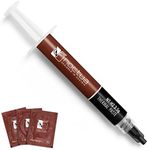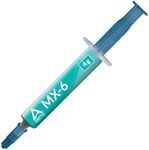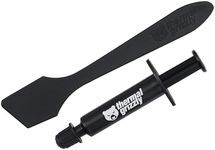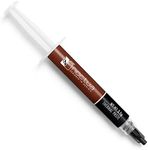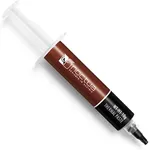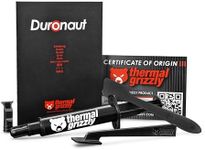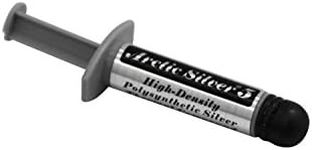Buying Guide for the Best Thermal Pastes
Choosing the right thermal paste is crucial for maintaining optimal temperatures for your CPU or GPU, which in turn ensures the longevity and performance of your computer. Thermal paste, also known as thermal compound or thermal grease, is used to fill the microscopic gaps between the CPU/GPU and the heatsink, allowing for better heat transfer. When selecting a thermal paste, consider the type of device you are using, the level of performance you require, and how often you plan to replace it. Understanding the key specifications will help you make an informed decision.Thermal ConductivityThermal conductivity is a measure of a material's ability to conduct heat. In the context of thermal paste, it indicates how effectively the paste can transfer heat from the CPU or GPU to the heatsink. This is usually measured in watts per meter-kelvin (W/mK). Higher thermal conductivity values mean better heat transfer, which is important for high-performance systems or overclocking. For general use, a thermal paste with moderate thermal conductivity is sufficient, but for gaming or high-performance computing, look for pastes with higher values.
ViscosityViscosity refers to the thickness or consistency of the thermal paste. It affects how easy the paste is to apply and how well it stays in place once applied. Low viscosity pastes are thinner and easier to spread, which can be beneficial for beginners. However, they may not stay in place as well under high temperatures. High viscosity pastes are thicker and may require more effort to apply, but they tend to stay put better, making them suitable for high-performance systems. Choose a viscosity that matches your comfort level with application and your system's needs.
Electrical ConductivityElectrical conductivity is a measure of a material's ability to conduct electricity. Ideally, thermal paste should have low or no electrical conductivity to prevent short circuits if it accidentally comes into contact with other components. Most thermal pastes are non-conductive, but some high-performance options may contain metal particles that can conduct electricity. If you are concerned about safety or are new to applying thermal paste, opt for non-conductive options to avoid any risk of damaging your components.
Durability and LongevityDurability and longevity refer to how long the thermal paste maintains its effectiveness before it needs to be reapplied. Some thermal pastes are designed to last for several years, while others may need to be replaced more frequently. This is important to consider if you want to minimize maintenance or if your system runs continuously at high temperatures. For general use, a paste with moderate longevity is sufficient, but for systems that are under constant heavy load, look for pastes that are known for their long-lasting performance.
Ease of ApplicationEase of application is an important factor, especially for those who are new to applying thermal paste. Some pastes come with applicators or are pre-applied on heatsinks, making them easier to use. Others may require more skill to apply evenly. Consider your experience level and whether you prefer a straightforward application process. If you're a beginner, look for pastes that are marketed as easy to apply or come with application tools.

